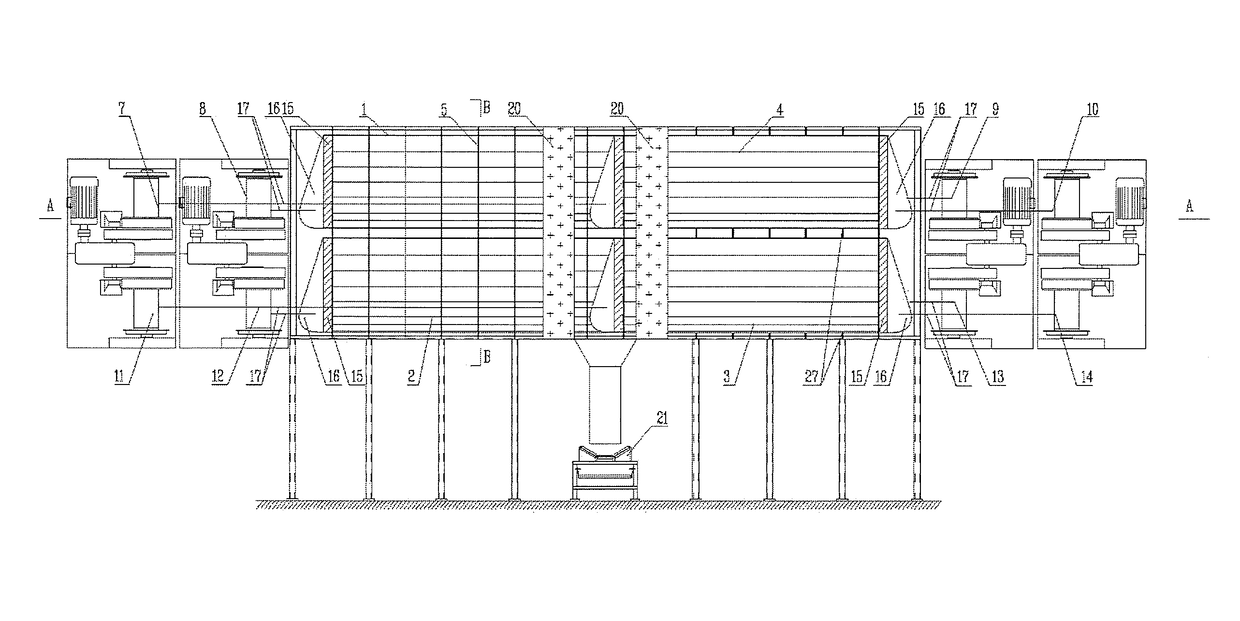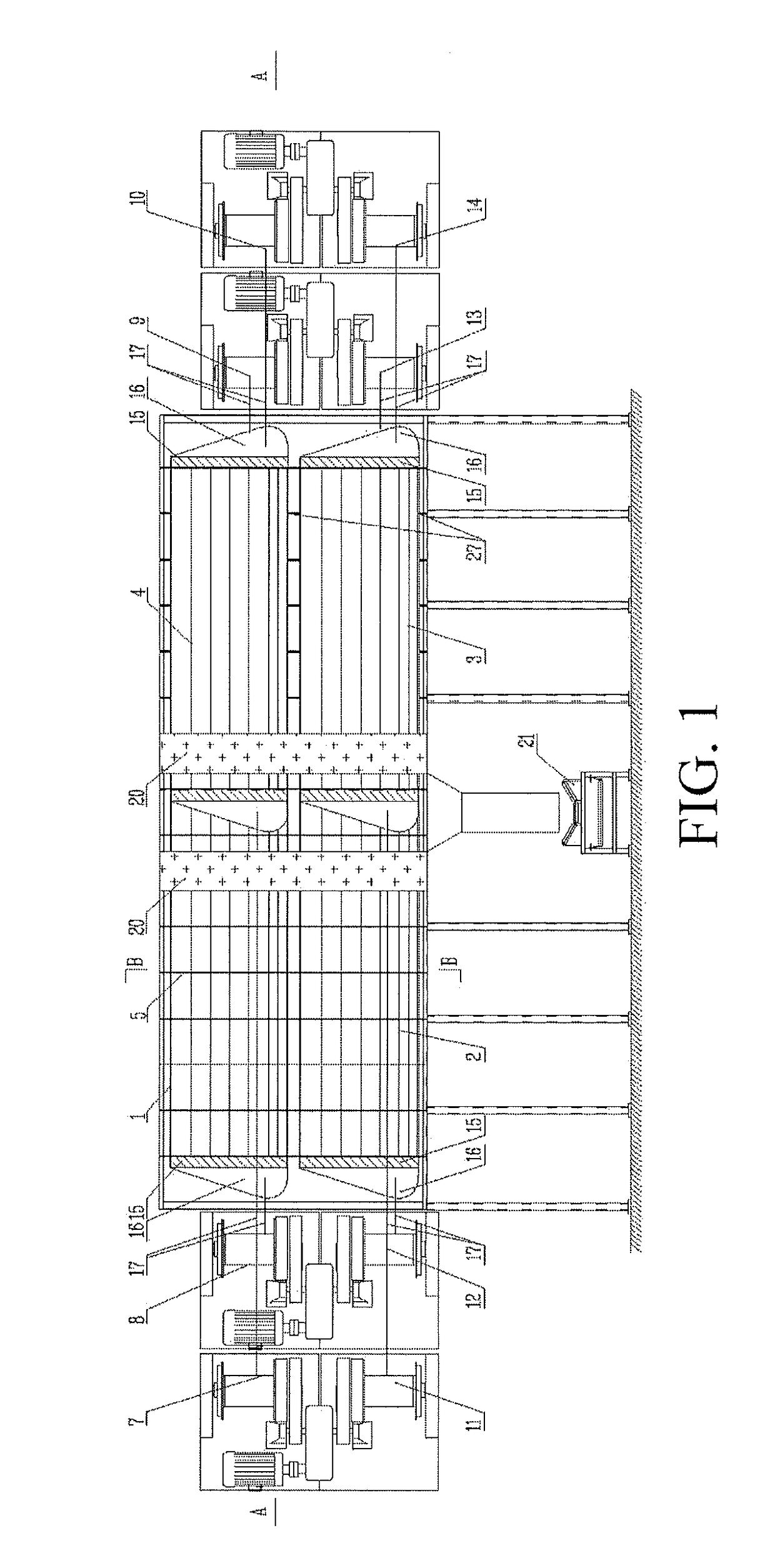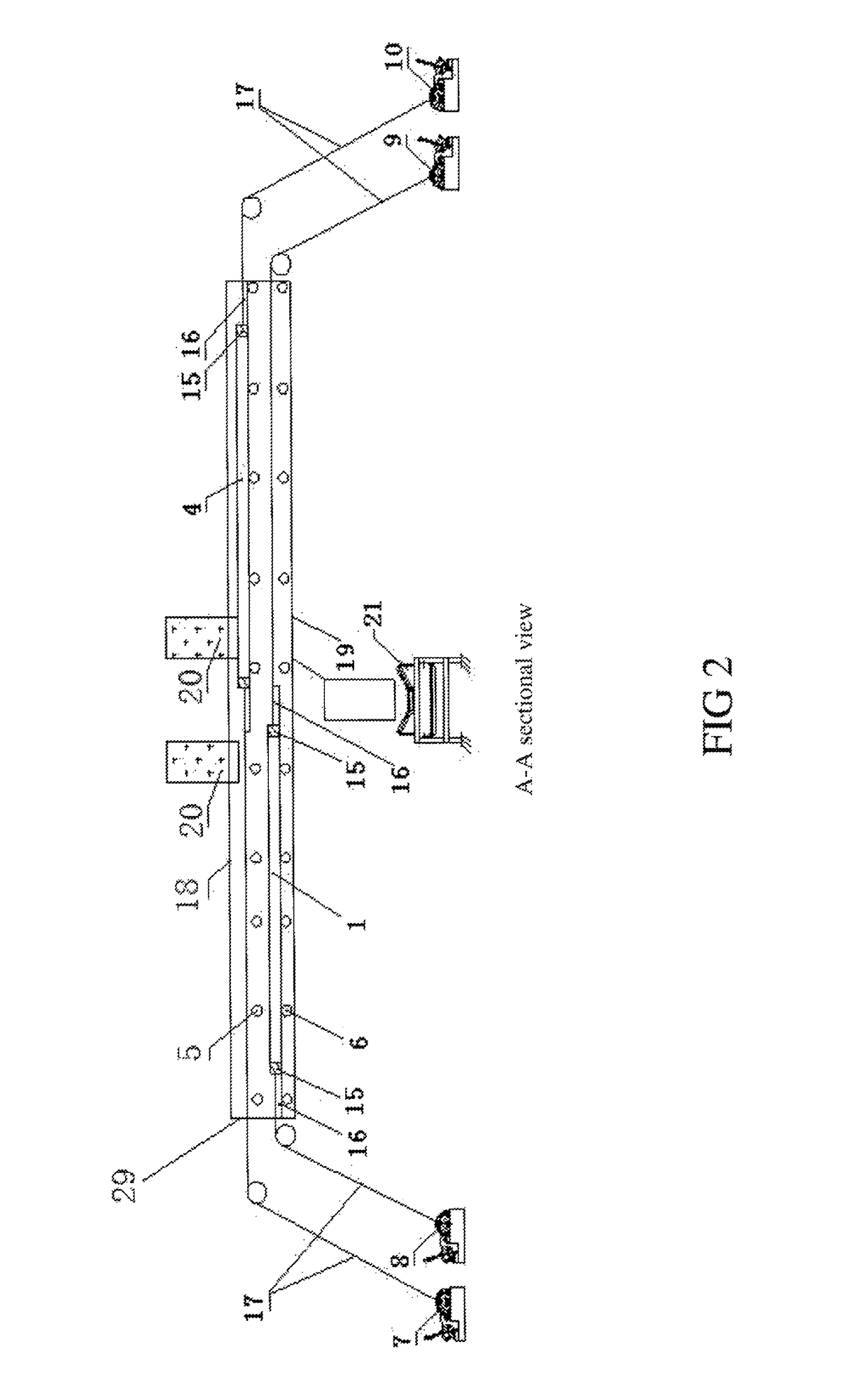Sludge recycling treatment system of urban sewage plant
a sewage plant and sludge technology, applied in the direction of energy-based wastewater treatment, energy input, chemistry apparatus and processes, etc., can solve the problems of generating a new pollutant under a high temperature, excessive heat energy consumption, and no feasible method for industrializing activated carbon manufacturing from sludge, so as to improve the loading capacity of the device, reduce the cost, and reduce the operation cost of sludg
- Summary
- Abstract
- Description
- Claims
- Application Information
AI Technical Summary
Benefits of technology
Problems solved by technology
Method used
Image
Examples
Embodiment Construction
[0025]The following further describes the present invention with reference to accompanying drawings.
[0026]The present invention includes a closed solar sludge drying device and a sludge roasting and activated carbon manufacturing device. As shown in FIG. 1 to FIG. 5, the closed solar sludge drying device includes an upper flat plate 18 manufactured from a highly transparent material, a lower plate 19 and an evaporator box 29 consisting of surrounding frames, where the lower plate 19 is manufactured by using a material of stainless steel or anti-corrosion carbon steel. The evaporator box is provided with two or four sets of upper and lower flat plate conveyor belts. When there are four sets of flat plate conveyor belts, the flat plate conveyor belts include a lower-layer top-side flat plate conveyor belt 1, a lower-layer bottom-side flat plate conveyor belt 2, an upper-layer bottom-side flat plate conveyor plate 3 and an upper-layer top-side flat plate conveyor plate 4. The above fla...
PUM
| Property | Measurement | Unit |
|---|---|---|
| transparent | aaaaa | aaaaa |
| organic transparent | aaaaa | aaaaa |
| anti-corrosion | aaaaa | aaaaa |
Abstract
Description
Claims
Application Information
 Login to View More
Login to View More - R&D
- Intellectual Property
- Life Sciences
- Materials
- Tech Scout
- Unparalleled Data Quality
- Higher Quality Content
- 60% Fewer Hallucinations
Browse by: Latest US Patents, China's latest patents, Technical Efficacy Thesaurus, Application Domain, Technology Topic, Popular Technical Reports.
© 2025 PatSnap. All rights reserved.Legal|Privacy policy|Modern Slavery Act Transparency Statement|Sitemap|About US| Contact US: help@patsnap.com



